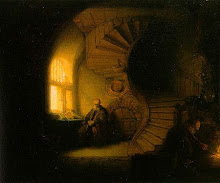A crow got quite angry with us today. He’s a member of the Nob Hill Gang. Or I guess you could call it the Nob Hill Murder. We began doing circles up and down Nob Hill Avenue North and 2nd Avenue North. These are quieter streets, so we don’t have to dodge quite as many people, as we do on our usual route, which follows the crown of Queen Anne Hill, and there’s significantly less traffic, so that when we do encounter anyone on the sidewalk, we can run easily in the street. There’s a dense population of crows on Nob Hill. It may be the same murder that followed us down Bigelow last winter in such numbers it looked with we were being followed by a cloud of black wings. These crows are insatiable. We stop feeding them when our supply of peanuts runs low; we want to save some for the lame crow who comes out when I whistle on Highland Drive. When we stop tossing them peanuts, the crows become all the more persistent. They fly over our heads, coming close enough to feel the rush of their wings. One of them dropped a twig on R’s head. It might have been the same one we encountered later at the top of 2nd Avenue North where it meets Galer. He flew down right in front of us and flapped his wings and chattered angrily at us. R relented and tossed him a peanut. He pounced on it, flew across the street and gobbled it up while his mates cawed raucously. The lame crow didn’t appear today. I think she gets discouraged by all the competition. She has to hobble around on one leg and is a little more vulnerable to attack, though she can be quite feisty. One of the homes we pass on Nob Hill is quite interesting, a lavishly decorated Victorian house with an elaborate Turkish turret upon which is inscribed in large black letters Quo Amplius Eo Amplius, which is Latin, and translates roughly as “Something more beyond plenty.” The interior is just as lavish, chock-a-block with antiques and curiosities from the Victorian era. I call it the Edward Gorey House, though it reminds me more of À rebours, a novel by the French writer Joris-Karl Huysman published in 1884. The narrative centers on an eccentric, reclusive, ailing aristocrat and aesthete named Des Esseintes, and is mostly an agglomeration of Des Esseintes’s musings on art and religion accompanied by his exquisitely refined descriptions of hyperaesthetic sensory experiences. In his preface for the 1903 edition, Huysmans wrote that it had been his desire to depict a man “soaring upwards into dream, seeking refuge in illusions of extravagant fantasy, living alone, far from his century, among memories of more congenial times, of less base surroundings ... each chapter became the sublimate of a specialism, the refinement of a different art; it became condensed into an essence of jewelry, perfumes, religious and secular literature, of profane music and plain-chant.” The decadent tenor of the book was intended to fly in the face of bourgeois convention; hence the title, À rebours, which is French for “against the current.”
Wednesday, November 11, 2020
Subscribe to:
Post Comments (Atom)


No comments:
Post a Comment